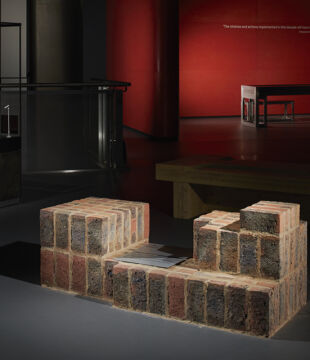
Details
Location: Holt
Brick Manufacturer: Forterra PLC
Brick Name: Bamford Blend
Architect: Mitchell Eley Gould Architects
Contractor: Stonewood Partnerships
About the project
Bamford Blend, a red clay brick produced exclusively for Taylor Maxwell by Forterra, was selected as the primary building material for 43 new homes, constructed as part of the redevelopment of the Tannery, a derelict industrial area where leather goods were once produced, on the northern boundary of the village of Holt in Wiltshire.
The Tannery’s buildings are a patchwork of materials, including stone, ashlar and rubble as well as red brick and slatted timber. The village, too, features a range of architectural styles and building materials, predominantly ashlar, rubble stone and red brick.
Of the Tannery’s original buildings, dating from the 18th through to the 20th centuries, four of historical interest – the Chamois Warehouse, the Boiler House, the Drying House, and the Leather Factory – have been retained and sympathetically redeveloped to provide approximately 100m2 of commercial units, with an allocation of community function space, cafes/eateries and artisanal lets.
Red brick is the dominant building material, primarily in bonded brickwork as well as some perforated brickwork for ventilation, most notably in The Drying House where chamois leather would be hung to dry.
A key aim of the development was to reconnect the village with its industrial heritage and thereby with its northern rural boundary, which lies beyond the Tannery site. This goal was also critical in ensuring that the new housing would also feel connected to both the industrial area and the existing village.
The choice of building materials was a major contributing factor to achieving this goal. The material palette for the new residential units takes cues from the industrial and village aesthetic. It was important that the materials would fit comfortably within the industrial context of metals and masonry yet be appropriate for domestic homes. With this in mind, a clay brick mix was chosen that sat well with the local area and enabled brick detailing to be incorporated into the scheme. For example, referencing the Tannery and the Drying House, most of the streetside boundaries are masonry, with sections of perforated brickwork to allow permeability of light and views.
To complement the red clay brick, zinc cladding was used on both roofs and facades to create a light industrial quality.
The clay brick resonates with the crafted nature of the buildings in the area and with the approach to the design. Plus, clay brick offered the benefits of being long-lived, giving a lasting, quality patina, and low maintenance.
This project is an excellent example of the versatility of clay brick as a building material, enabling old and new, industrial and domestic to seamlessly blend and enhance our built environments.
Sponsored by Grayson Building Products

With large stocks from reputable manufacturers, Grayson can deliver an extensive range of goods across the UK & Ireland. Grayson work in partnership with the leading manufacturers to provide expert advice to our clients. Grayson get the right products, to the right place at the right time – key for any major project to keep running on schedule.















